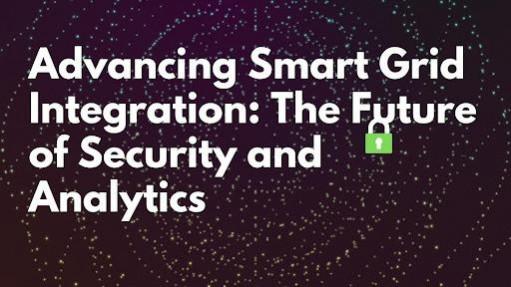
The rapid evolution of enterprise integration in smart grids has revolutionized the way modern energy infrastructure operates. Gokul Babu Kuttuva Ganesan, an expert in smart grid management, explores the cutting-edge innovations in security and analytics that are reshaping the sector. This article delves into the latest advancements that enhance operational efficiency, data security, and real-time monitoring.
The Foundation of Smart Grid Enterprise Integration
The backbone of modern smart grid systems is enterprise integration, which enables seamless communication between diverse energy management systems. The integration of middleware solutions ensures smooth data flow between components, reducing latency and improving response times. This architecture supports large-scale data processing, allowing for better decision-making and operational reliability.
Additionally, these integrated frameworks facilitate real-time analytics capabilities, enhancing predictive maintenance and fault detection. Advanced security protocols protect critical infrastructure while ensuring regulatory compliance. Cloud-based integration services provide scalability to accommodate growing energy demands, while APIs enable third-party innovations. This comprehensive approach ultimately delivers improved grid resilience, energy efficiency, and consumer engagement through transparent energy usage data and demand response programs.
Enhancing Security with Multi-Layered Protection
Security is a critical concern in smart grid networks. A multi-layered security framework has been developed to safeguard grid infrastructure against cyber threats. Advanced authentication protocols, intrusion detection systems, and encryption techniques help prevent unauthorized access and data breaches. Additionally, real-time monitoring tools continuously scan the network for anomalies, ensuring rapid response to potential threats.
Real-Time Analytics for Proactive Grid Management
The integration of real-time analytics allows grid operators to monitor and respond to changes instantaneously. With the use of Phasor Measurement Units (PMUs) and advanced sensor networks, real-time event detection has become more efficient. Machine learning algorithms analyze historical data and predict potential system failures, enabling predictive maintenance and reducing downtime.
Edge computing further enhances this capability by processing critical data locally, minimizing latency for time-sensitive operations. Distributed intelligence across the grid creates a self-healing network that can automatically reconfigure during disturbances. Digital twin technology provides virtual replicas of physical assets, enabling simulation-based optimization.
Interoperability for Seamless Communication
Interoperability remains a key challenge in smart grid deployment. New frameworks facilitate communication between legacy systems and modern grid technologies. By incorporating standardized protocols, different components of the grid can interact seamlessly, ensuring compatibility across various devices and platforms. This enhances reliability and streamlines system-wide coordination. International standards adoption accelerates innovation while reducing implementation costs and technology fragmentation.
Fraud Detection with Machine Learning
Fraud detection has become more sophisticated with the integration of artificial intelligence. Machine learning models analyze consumption patterns to detect irregularities, such as energy theft or billing fraud. These intelligent systems continuously adapt to new fraudulent tactics, improving accuracy in identifying suspicious activities and mitigating financial losses.
Cloud-Based Solutions for Scalable Grid Management
Cloud computing has emerged as a powerful tool for managing large-scale smart grid networks. By leveraging cloud-based platforms, grid operators can store and process vast amounts of data efficiently. Cloud solutions also provide remote accessibility, allowing operators to monitor grid performance from anywhere, improving overall system flexibility and resilience.
The Road Ahead: Future Trends in Smart Grid Integration
The future of smart grid technology lies in continuous innovation. Advancements in artificial intelligence, blockchain for secure transactions, and edge computing for localized data processing are set to redefine grid management. These emerging technologies will further enhance efficiency, security, and adaptability in the energy sector.
In conclusion, the integration of cutting-edge security measures, real-time analytics, and scalable cloud solutions is shaping the future of smart grids. Gokul Babu Kuttuva Ganesan highlights that ongoing research and development will drive further advancements, ensuring that smart grids remain resilient, secure, and efficient in an increasingly digital world.

















